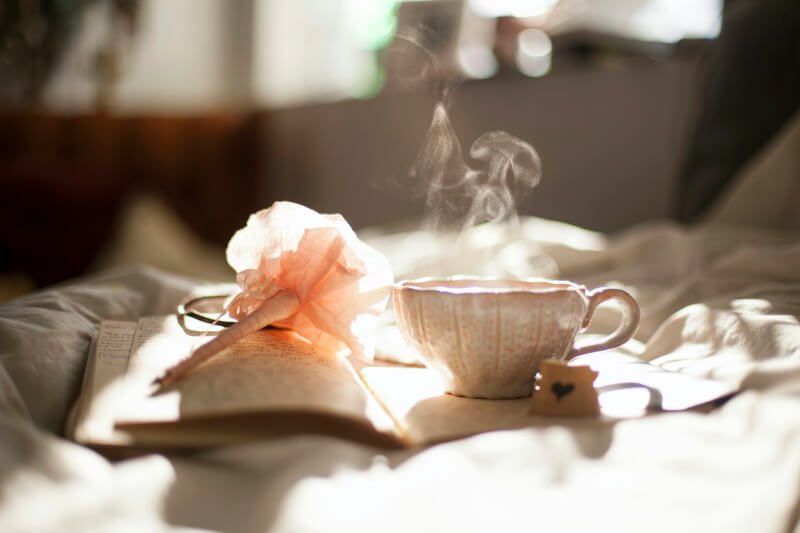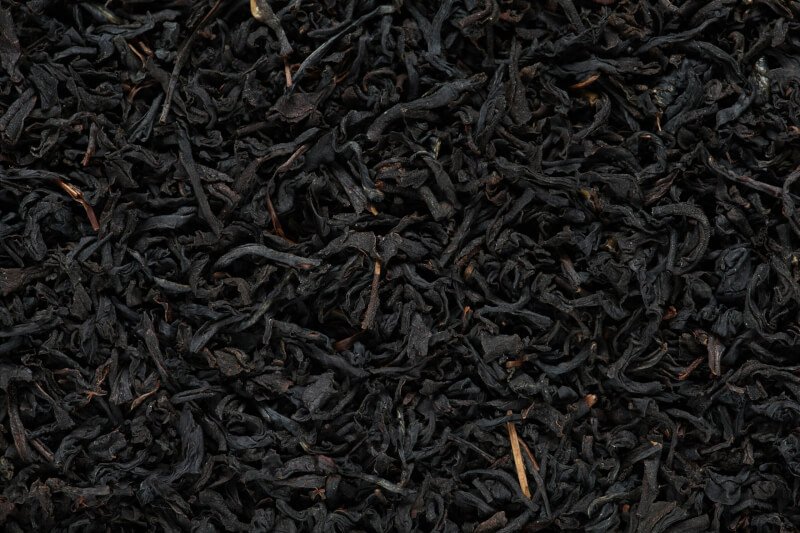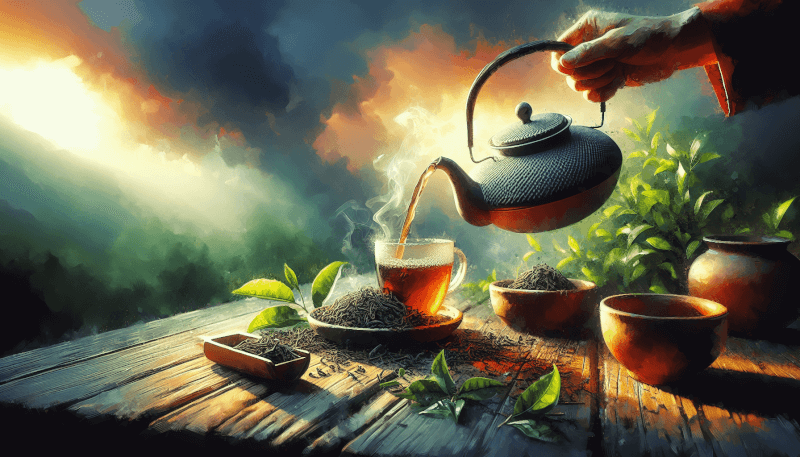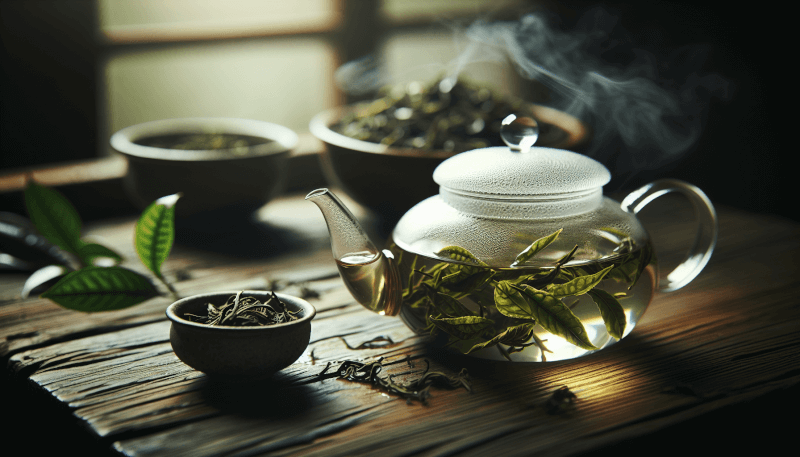Are you a tea lover looking to enhance your brewing skills? Look no further than the art of tea brewing with minimally processed leaves. In this article, we will explore the beauty and nuances of using minimally processed tea leaves to create the perfect cup of tea. Whether you prefer delicate floral notes or bold, robust flavors, mastering this technique will elevate your tea-drinking experience to a whole new level. So grab your favorite tea leaves and let’s get brewing!

Choosing the Right Tea Leaves
Understanding Different Types of Tea Leaves
When it comes to brewing the perfect cup of tea, one of the most important factors to consider is the type of tea leaves you choose. There are various types of tea, including green tea, black tea, oolong tea, white tea, and herbal tea, each with its own unique flavor profile and characteristics. Understanding the differences between these types of tea leaves is crucial in selecting the perfect brew for your taste preferences.
Green tea, for example, is known for its fresh and grassy flavor, while black tea offers a bold and robust taste. Oolong tea falls somewhere in between, with a rich and complex flavor profile. White tea, on the other hand, is delicate and subtly sweet. Herbal teas, such as chamomile or peppermint, are made from herbs and botanicals other than the traditional tea plant and provide a wide range of flavors.
Selecting High-Quality Minimally Processed Leaves
Once you have determined the type of tea you want to brew, it is important to choose high-quality minimally processed tea leaves. Opting for organic and loose-leaf tea is often the best choice, as it allows the leaves to fully expand and release their flavors during brewing. Loose-leaf tea also gives you the opportunity to visually inspect the leaves and ensure their quality.
In contrast, tea bags often contain lower-grade leaves that have been chopped into small pieces. This can limit the tea’s flavor and overall quality. By selecting high-quality minimally processed leaves, you are ensuring a more enjoyable and flavorful tea brewing experience.
Considering the Origin and Harvesting Process
When selecting tea leaves, considering the origin and harvesting process can also play a significant role in the quality of your brew. Different regions have different climate and soil conditions, which can greatly influence the taste and aroma of the tea. For example, teas from Darjeeling, India, are known for their muscatel flavor, while teas from Yunnan, China, exhibit a distinct malty taste.
Additionally, the timing of the tea harvest can impact the flavor. Younger leaves, often harvested in the spring, tend to produce a more delicate and nuanced flavor, while older leaves can result in a stronger and more robust brew. Therefore, taking into account the origin and harvesting process can help you choose tea leaves that align with your flavor preferences.
Preparing Tea Leaves for Brewing
Proper Storage of Tea Leaves
To ensure optimal freshness and flavor retention, proper storage of tea leaves is crucial. Exposure to air, light, moisture, and strong odors can all degrade the quality of the leaves over time. It is best to store tea leaves in airtight containers, away from direct sunlight and strong odors.
Glass jars or ceramic containers with tight-fitting lids are ideal for storing tea leaves. Avoid using plastic containers, as they can transfer unwanted flavors to the tea. It is also recommended to store different types of tea in separate containers to prevent flavor cross-contamination.
Measuring the Right Amount of Leaves
The amount of tea leaves used for brewing plays a significant role in the overall flavor and strength of the brewed tea. It is important to measure the right amount of leaves, as using too few or too many can result in a weak or overpowering brew.
A general rule of thumb is to use approximately 1 teaspoon of tea leaves for every 8 ounces of water. However, this can vary depending on personal preference and the specific type of tea being brewed. It may be necessary to adjust the amount of leaves based on experimentation and taste testing.
Pre-washing the Leaves
Before brewing your tea, it is beneficial to pre-wash the leaves. This involves rinsing the leaves briefly under cool water to remove any dust or impurities that may be present. Pre-washing can also help awaken the aroma of the leaves, enhancing the overall flavor of the brewed tea.
To pre-wash the leaves, simply place them in a mesh strainer or tea infuser and hold them under running water for a few seconds. Gently swirl the leaves around to ensure thorough rinsing. Once pre-washed, the leaves are ready for brewing.
Assessing the Water Quality
The quality of the water used for brewing tea can greatly influence the flavor and overall enjoyment of the tea. Water that is high in mineral content or chlorine can negatively impact the taste. It is important to assess the quality of your tap water and consider using filtered or purified water for optimal brewing.
Filtered water helps to remove impurities and enhances the clarity of the tea’s flavors. It is recommended to use cold, fresh water and avoid using water that has been reheated multiple times, as this can affect the taste. By using high-quality water, you can enhance the brewing process and achieve a superior cup of tea.
Mastering the Brewing Techniques
Determining the Ideal Water Temperature
Different types of tea require specific water temperatures to extract their flavors optimally. Green tea, for example, is best brewed with water around 175°F (79°C), while black tea typically requires water around 212°F (100°C).
To achieve the ideal water temperature, it is helpful to use a thermometer or invest in a variable temperature electric kettle. This allows precise control over the water temperature, ensuring that the tea leaves are neither under extracted nor over-extracted.
Understanding the Steeping Time
The steeping time, or the amount of time the tea leaves are in contact with the water, is another crucial factor in tea brewing. Steeping too long can result in a bitter or astringent brew, while steeping too short can lead to a weak and flavorless cup.
The optimal steeping time varies depending on the type of tea being brewed. Green teas typically require shorter steeping times, ranging from 1 to 3 minutes, while black teas often benefit from longer steeping times of 3 to 5 minutes. Herbal teas can steep for even longer, up to 10 minutes, to extract their full flavor potential.
Exploring Different Brewing Techniques
There are various brewing techniques that can be experimented with to further enhance the tea brewing experience. Some popular methods include using a gaiwan, a traditional Chinese tea brewing vessel, or a French press. These methods can provide different nuances in flavor and allow for a more personalized tea brewing process.
Additionally, cold brewing or steeping tea leaves in cold water overnight can create a refreshing and smooth iced tea variation. This method is particularly suitable for certain types of tea, such as green tea or herbal tea, and can provide a unique and enjoyable tea experience.
Using Special Brewing Tools
Using specialized brewing tools can not only enhance the brewing process but also add a touch of elegance to your tea rituals. Tea infusers or strainers, for example, are essential to ensure a clean and debris-free brew. They come in various designs, such as metal ball infusers or mesh tea filters, allowing you to choose the one that best suits your needs.
Tea timers can also be useful to keep track of steeping times and ensure consistent results. They come in different forms, from traditional hourglasses to digital timers, offering a convenient way to monitor the brewing process.
Enhancing the Tea Brewing Experience
Using Filtered Water for Optimal Flavor
As mentioned earlier, the quality of water used in tea brewing can significantly impact the flavor of the final brew. Using filtered water, free from impurities and excessive minerals, can help to maximize the tea’s flavor potential.
Investing in a water filter or using bottled spring water can be a great way to ensure consistent and high-quality water for your tea brewing. By using filtered water, you will be able to experience the true taste and nuanced flavors of the tea leaves.
Experimenting with Tea Leaves to Water Ratio
The ratio of tea leaves to water also plays a crucial role in achieving the perfect flavor. While a general guideline of 1 teaspoon of tea leaves per 8 ounces of water is a good starting point, it is worth experimenting with different ratios to find your preferred strength.
You might find that certain teas benefit from a higher leaf-to-water ratio for a stronger and more flavorful cup, while others might require less tea to achieve a balanced taste. Adjusting the ratio based on personal preference allows you to tailor the flavor to your liking.
Adding Natural Sweeteners or Enhancers
To further enhance the flavor of your brewed tea, you can experiment with adding natural sweeteners or enhancers. Some commonly used sweeteners include honey, agave nectar, or stevia. These add a touch of sweetness without overpowering the tea’s natural flavors.
Other enhancers, such as lemon slices, fresh mint leaves, or ginger, can provide additional depth and complexity to the brew. These additions can be used to complement the flavor profiles of specific teas and create a unique and personalized tea experience.
Pairing Tea Varieties with Complementary Foods
Pairing tea with complementary foods can elevate the overall tea brewing experience. Just like wine, certain teas pair well with specific types of foods, enhancing each other’s flavors.
For example, delicate green teas can be paired with light and floral desserts, while robust black teas can stand up to rich and chocolaty treats. Oolong teas often complement savory dishes and seafood, while herbal teas provide a refreshing accompaniment to fruit-based desserts.
By experimenting with different tea and food pairings, you can create harmonious flavor combinations that leave a lasting impression.

Achieving the Perfect Tea Flavor
Understanding the Importance of Leaves-to-Water Ratio
As mentioned earlier, the ratio of tea leaves to water is critical in achieving the desired flavor of the brew. A balance between the two ensures that the tea’s flavors are extracted optimally without overwhelming the palate.
Using too few leaves can result in a weak and diluted brew, lacking in taste and aroma. On the other hand, using too many leaves can lead to a strong and overpowering brew with bitter or astringent notes. Finding the right leaves-to-water ratio is key to achieving a well-balanced and enjoyable cup of tea.
Adjusting Steeping Time for Desired Strength
The steeping time of tea leaves directly impacts the strength of the brewed tea. A longer steeping time allows for more flavor extraction, resulting in a stronger and more robust cup of tea. Conversely, reducing the steeping time can produce a lighter and more delicate brew.
Adjusting the steeping time according to personal preference allows you to fine-tune the tea’s strength, ensuring it aligns with your desired flavor profile. It is helpful to keep track of the steeping time while experimenting to find the perfect balance.
Knowing the Effects of Water Temperature on Flavor
Water temperature plays a crucial role in bringing out the best flavors in tea. Different temperatures can extract different flavor compounds from the leaves, resulting in varying taste profiles.
For example, steeping green tea at a higher temperature can lead to a bitter and astringent brew, while steeping it at a lower temperature highlights its delicate and grassy notes. Black teas, on the other hand, require higher temperatures to unlock their bold and robust flavors.
By understanding the effects of water temperature on flavor, you can adjust the brewing process accordingly to achieve the desired taste.
Advancing Your Tea Brewing Skills
Exploring the World of Tea Tasting
Tea tasting is an excellent way to further develop your tea brewing skills and expand your palate. Participating in tea tasting sessions allows you to evaluate and appreciate different tea varieties, identifying their unique flavors, aromas, and qualities.
Pay attention to the appearance, aroma, taste, and mouthfeel of each tea, taking notes to track your observations. This sensory exploration will enhance your understanding of tea and help you refine your brewing techniques.
Attending Tea Brewing Workshops or Classes
To take your tea brewing skills to the next level, consider attending tea brewing workshops or classes. These educational experiences provide hands-on learning and guidance from tea experts. You will have the opportunity to learn advanced brewing techniques, discover new teas, and gain insights into the art and science of tea brewing.
Workshops and classes are also an excellent way to connect with fellow tea enthusiasts and share knowledge and experiences. The guidance and feedback from tea professionals can greatly enhance your brewing skills and deepen your appreciation for tea.
Experimenting with Tea Blends or Infusions
Once you have mastered the basics of tea brewing, it is time to get creative and experiment with tea blends or infusions. Blending different tea varieties, such as combining black tea with oolong tea, can create unique flavor profiles that are entirely your own.
You can also try infusing tea with herbs, spices, or fruits to add complexity and depth to the brew. For example, infusing green tea with jasmine flowers or adding ginger to black tea can result in delightful flavor combinations.
Be open to experimentation and don’t be afraid to think outside the box. The possibilities for creating your own signature tea blends or infusions are endless.
Learning from Tea Masters
Learning from tea masters is an invaluable way to expand your knowledge and refine your tea brewing skills. Seek out opportunities to learn directly from experienced tea experts who can share their wisdom and techniques.
Tea masters often have a deep understanding of tea history, culture, and the intricacies of tea brewing. Learning from their expertise can provide valuable insights into the art of tea and elevate your own brewing practice.
Whether through books, online resources, or workshops led by tea masters themselves, make an effort to immerse yourself in the wisdom and teachings of those who have dedicated their lives to the mastery of tea.

Troubleshooting Common Brewing Issues
Understanding Bitterness or Astringency
If your tea tastes bitter or astringent, it is likely a result of over-steeping or using water that is too hot. To remedy this, try reducing the steeping time or using slightly cooler water. Experiment until you find the right balance that brings out the desired flavors without any undesirable bitterness.
Remedying Over-Steeping or Under-Steeping
Over-steeping or under-steeping your tea can lead to imbalanced flavors and a subpar brew. To remedy over-steeping, try reducing the steeping time in subsequent brews or adding more water to dilute the strong flavors.
For an under-steeped tea, increase the steeping time to extract more flavor from the leaves. It may take some trial and error to find the perfect steeping time for each tea variety, but with practice, you will achieve optimal results.
Addressing Weak or Flat Flavor
If your tea tastes weak or flat, it may be a result of using too few tea leaves or steeping for too short a time. Increasing the amount of leaves or extending the steeping time can often solve this issue and enhance the flavor profile of the tea.
Remember to adjust these factors based on personal preferences and the specific characteristics of the tea you are brewing. With some experimentation, you will be able to find the perfect balance and achieve a rich and flavorful cup of tea.
Exploring Different Tea Brewing Methods
Learning the Art of Gongfu Cha
Gongfu Cha, an ancient Chinese tea brewing method, is a revered and cherished practice among tea enthusiasts. Translated as “the skillful way of tea,” Gongfu Cha emphasizes precise brewing techniques and careful attention to detail.
In this method, a small teapot or gaiwan is used to brew the tea, allowing for multiple short infusions. This technique highlights the tea’s evolving flavors and aromas with each steeping, creating a multi-dimensional taste experience.
Gongfu Cha requires specific brewing tools, such as a tea tray, tea pitcher, and small teacups. It also involves precise leaf-to-water ratios, controlled water temperatures, and timed steeping intervals. Mastering Gongfu Cha can be a rewarding journey that deepens your appreciation for tea and provides a glimpse into the rich cultural heritage of tea brewing.
Discovering Japanese Tea Brewing Techniques
Japan has a long-standing tea culture with its own unique brewing techniques. Japanese tea brewing often revolves around the preparation of matcha, a powdered green tea that is whisked into a frothy concoction.
To brew matcha, a bamboo whisk is used to blend the powdered tea with hot water, resulting in a vibrant and invigorating beverage. It is a ceremony-like process that fosters mindfulness and appreciation for the tea.
Japanese tea brewing also includes sencha, a classic loose-leaf green tea. The preparation involves steeping the leaves in hot water for a predetermined time to extract the desired flavors. Exploring Japanese tea brewing techniques offers a glimpse into a different tea tradition and invites a new perspective on tea preparation.
Adapting Western Tea Brewing Practices
Western tea brewing practices, characterized by steeping tea in a pot with hot water, offer simplicity and convenience. This method is often used for black teas and herbal infusions, where a longer steeping time brings out the bold flavors.
To brew tea using the Western method, the appropriate amount of tea leaves is placed in a teapot or infuser, followed by hot water. The steeping time can vary depending on personal preference, but a general guideline is 3 to 5 minutes.
Adapting Western tea brewing practices allows for flexibility and ease of preparation. It is ideal for making larger quantities of tea or when entertaining guests. By incorporating Western techniques into your tea brewing repertoire, you can cater to different preferences and occasions.

Understanding the Role of Water
Exploring Different Water Sources
Water is the main ingredient in tea brewing and has a significant impact on the final brew’s flavor. Exploring different water sources can provide unique taste experiences and give you a deeper understanding of the interplay between water and tea.
Consider using different types of water, such as tap water, mineral water, or spring water, and see how they affect the flavor of the tea. Each water source has its own mineral composition, pH level, and flavor profile that can subtly influence the taste of the brewed tea.
Filtering or Purifying Water for Optimal Brewing
To ensure the best possible flavor, it is essential to filter or purify the water used for tea brewing. Filtration systems can remove impurities, such as chlorine or heavy metals, that may negatively impact the taste of the tea.
Activated carbon filters, reverse osmosis systems, or water filter pitchers are popular methods for filtering water at home. These options help to eliminate unwanted substances while retaining essential minerals that contribute to the tea’s flavor.
Understanding the Mineral Content of Water
The mineral content of water can greatly affect the taste and quality of the brewed tea. Some minerals in water, such as calcium, magnesium, and potassium, can enhance the tea’s flavor and contribute to a well-rounded brew.
Different regions have varying mineral compositions in their water sources, resulting in unique flavors when brewing tea. For example, water with a higher mineral content can create a more robust and full-bodied cup of tea, while water with a lower mineral content can produce a lighter and more delicate brew.
By understanding the mineral content of your water source, you can make informed decisions on how it may impact the flavor of your tea and adjust the brewing process accordingly.
Caring for Tea Brewing Tools
Cleaning and Maintaining Tea Infusers or Strainers
Properly cleaning and maintaining your tea infusers or strainers is essential for maintaining their functionality and ensuring clean and debris-free brews. After each use, rinse the infuser or strainer with warm water to remove any tea residue.
For more thorough cleaning, a gentle scrub with a soft brush and mild detergent can be effective. Make sure to rinse the infuser or strainer thoroughly to remove any soapy residue.
Periodically, it is recommended to deep clean the infuser or strainer by soaking it in a mixture of warm water and vinegar. This helps to remove any built-up oils or stains, ensuring the purity of your future brews. After soaking, rinse and dry the infuser or strainer thoroughly before storing.
Proper Storage of Tea Pots, Cups, and Accessories
Tea pots, cups, and other tea accessories should be properly stored to maintain their integrity and longevity. After use, it is important to clean and dry these items thoroughly to prevent any residual moisture, which can lead to unwanted odors or mold growth.
Tea pots and cups should be stored in a cool and dry place, away from direct sunlight. If possible, keep them in airtight containers or protective cases to prevent dust or other contaminants from settling on the surfaces.
Additionally, it is advisable to store tea pots with removable infusers separately to prevent any damage or scratches. By caring for your tea brewing tools and accessories, you ensure their longevity and preserve the quality of your future tea brewing experiences.
Replacing Old or Damaged Tools
Over time, tea brewing tools may become worn out or damaged, compromising their functionality and affecting the quality of your brews. It is important to regularly inspect your tools and replace any old or damaged ones.
Tea infusers or strainers with broken or missing mesh can allow tea leaves or debris into the brew, resulting in an unpleasant drinking experience. Likewise, tea pots or cups with cracked or chipped surfaces can affect the heat retention or alter the flavor profile of the tea.
By investing in new, high-quality tools and replacing old or damaged ones, you ensure consistent and enjoyable tea brewing sessions. Properly maintained and functional tools contribute to a hassle-free and satisfying tea experience.


